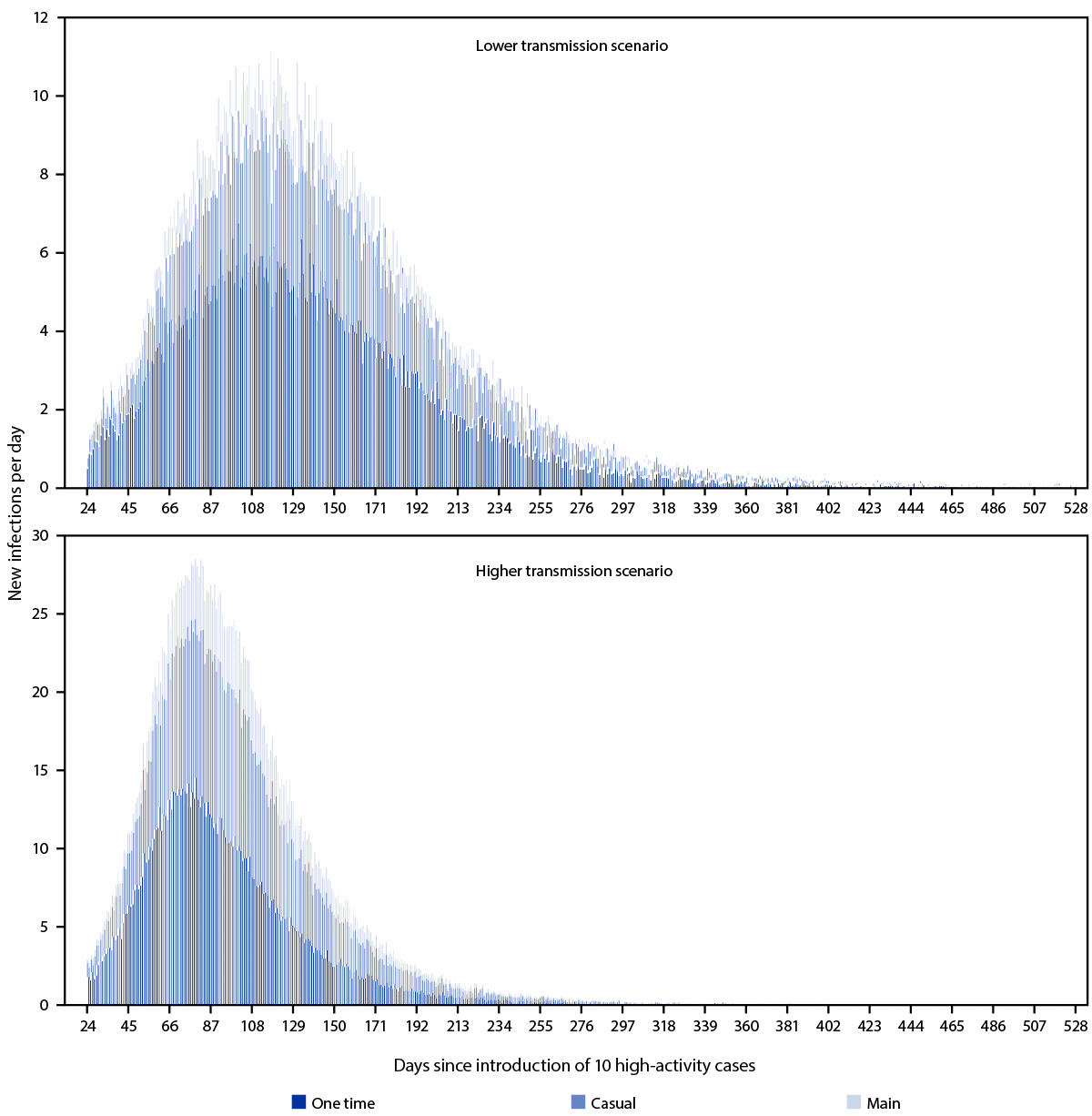A study conducted by scientists from the US Centers for Disease Control and Prevention (CDC) indicates that reducing one-time sexual partnerships among gay, bisexual, and other men who have sex with men can significantly reduce the transmission of the monkeypox virus. The research is published in the CDC's Morbidity and Mortality Weekly Report (MMWR).
Background
Global outbreaks of monkeypox infections in 2022 have indicated that sexual contact is the primary route of monkeypox transmission among men with multiple male sex partners.
Some recent survey reports have revealed that men who have sex with men (MSM) have adopted certain measures to protect themselves and their partners from monkeypox infection. The most common measure is reducing one-time sexual partnerships.
Various models of sexual infection transmission developed by the CDC have previously been used to study the spread of human immunodeficiency virus (HIV) and gonorrhea in the US. In the current study, these models were used to study the transmission dynamics of monkeypox infection among MSM.
Study design
The dynamic network models simulated by CDC represent sexual behaviors between MSM. In these models, men were predicted to have various types of sexual relationships, including primary, causal, or one-time partnerships.
According to the model simulations, men might have zero or one primary sexual partnership at a time that lasted on average 477 days, or zero, one, or two casual partnerships at a time that lasted for on average 166 days. In addition, men might have one-time partnerships that lasted for one day.
Between 2016 and 2019, CDC collected data from MSM, who reported the number, type, and duration of their current sexual partnerships. This data was used to develop six categories of sexual activity, which differ in their rate of one-time partnership formation.
Two conditions of monkeypox transmission were simulated wherein ten highly active cases were introduced to a population of 10,000 MSM. Both lower and higher transmission rates were considered by adjusting transmission probability per act. In the lower transmission condition, monkeypox was assumed to infect 15% of MSM. In the higher transmission condition, the virus was expected to infect 25% of MSM.
The reduction in the percentage of infected MSM was estimated at baseline (time of viral entry in the population) and under a condition wherein MSM reduced the frequency of one-time partnerships by 40% after 2.5 months of viral entry in the population. This condition was created based on the observations made in recent surveys.

Modeled number* of new infections each day by lower† and higher§ transmission scenarios and type of partnership over the course of a monkeypox outbreak among men who have sex with men, by time since importation of 10 high activity cases — United States, 2022
Important observations
The predictions made by the models revealed that MSM with more than one partner in the past three weeks have a 2 – 7 times higher risk of contracting monkeypox infection compared to those with only one partner.
Considering the lower transmission condition, MSM in the highest category of sexual activity have a 3.6 times higher risk of contracting monkeypox infection compared to those with only one partner in the past three weeks. In the higher transmission condition, these men were predicted to have a 7 times higher risk of contracting the infection.
A disproportionate effect of one-time partnerships was observed on viral transmission. In the models, one-time partnerships represented 3% of the total daily partnerships and 16% of the sexual contacts on a given day. However, depending on the rate of transmission, these partnerships accounted for 46% to 54% of viral transmission.
In the lower transmission condition, one-time, casual, and primary partnerships were associated with 54%, 33%, and 12% of viral transmission, respectively. In the higher transmission condition, about 45%, 38% and 15% of transmissions were caused by one-time, casual, and primary partnerships, respectively.
Notably, the model predicted that a 40% reduction in one-time partnerships could decrease the percentage of infected MSM by 20% to 31%. This effect was more significant in the lower transmission condition. Furthermore, the reduction in one-time partnerships delayed the timing of accumulating 10% infection by 150 days.
Study significance
This CDC study highlights the significance of reducing one-time partnerships in lowering the risk of monkeypox spread among MSM. Reducing the number of one-time or casual sex partners can substantially control monkeypox outbreaks in non-endemic countries.
The scientists suggest that the observed effect could be increased further by implementing additional control measures, such as vaccination, testing, and contact tracing.